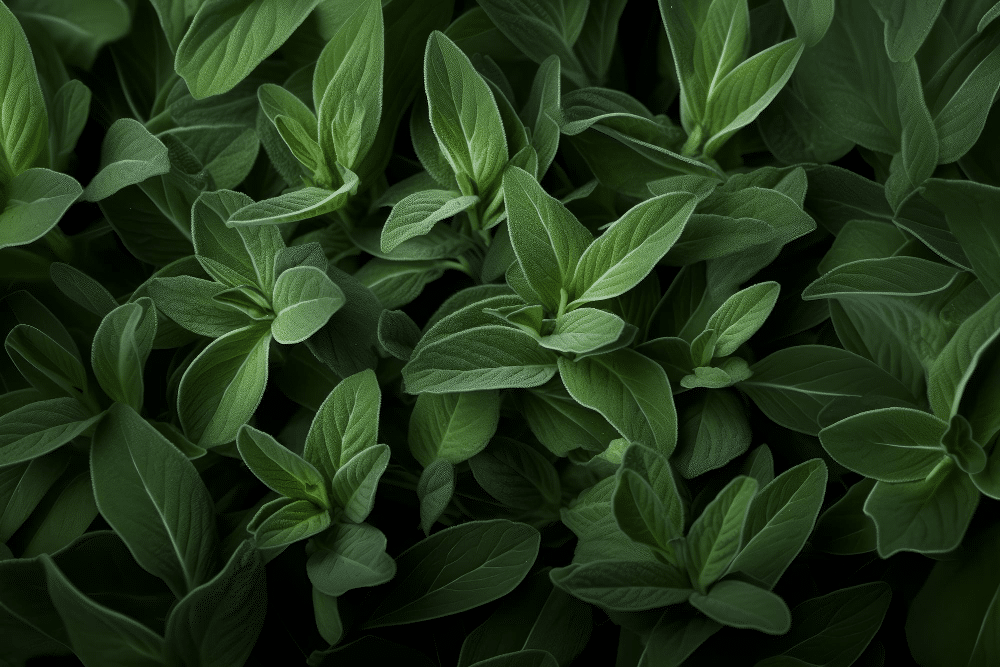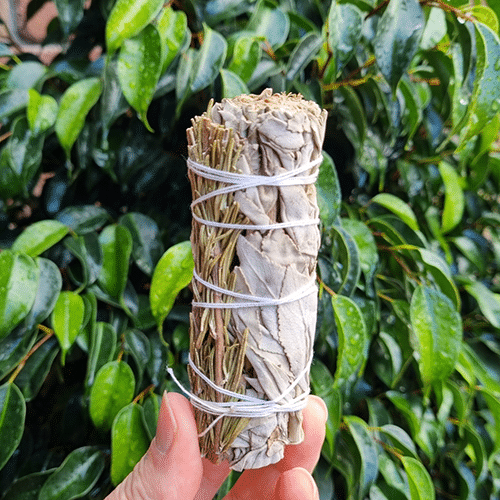Afterpay & ZIP Available
Same-day dispatch on orders before 3pm
10% OFF your first order: WELCOME10

You searched ‘what is sage cleansing’ on Google and it got you here. If you’re unaware of what sage cleansing is then you’ve come to the right place. We’re here to tell you all about cleaning with these grayish green leaves.
This article aims to demystify the ritual of sage cleansing, exploring its historical background, varieties, and contemporary relevance. We’ll also give you some sage advice.
Sage or Latin salvia cleansing, also known as smudging, originated within Indigenous American cultures. The word origin was in Latin and its scientific name is salvia officinalis. Sage belongs to the mint family. It was and still is a sacred purification, spiritual cleansing, and protection ritual.
The ritual involved burning sage, allowing the smoke to envelop the person or space being cleansed.
Over time, various cultures have adopted and adapted this practice, each infusing their unique interpretations and significance into the ritual.

There are several types of sage also known as genus salvia, each possessing unique properties.
Let’s look at them one by one:
The most commonly used is white sage, known for its strong aromatic properties. However, it’s crucial to source sage ethically, given the overharvesting and sustainability issues surrounding white sage in particular.
Garden sage, another popular variety, is often used in cooking but also holds cleansing properties. Each type of sage is chosen for specific rituals based on its properties.
Beyond white and garden sage, there are other varieties like blue sage, often used for healing and calming purposes.
Then there is desert sage, known for its warm, earthy scent and utilised in rituals promoting strength and wisdom.
These diverse types of sage offer a rich tapestry of options for various ceremonial and personal needs. It’s essential to understand each type’s specific uses and cultural associations to ensure they are used appropriately and respectfully.
Additionally, with the growing popularity of sage cleansing, it’s increasingly important to be mindful of where and how sage is sourced.
Supporting local, ethical growers and harvesters not only helps preserve the ecological balance but also honours the traditional practices and communities from which these rituals originate. So as a profoundly wise person source your sage ethically.

Sage cleansing involves a specific process: lighting the sage, allowing it to smoulder, and directing the smoke around a person or space.
It’s important to do this with respect and intention. Safety is also paramount; ensure proper ventilation and be mindful of fire hazards.
Despite its popularity, many misconceptions persist, such as the belief that sage cleansing has supposed healing powers and can replace professional medical or psychological treatment. So we can say that the curative properties attributed are extremely beneficial for a wise man.

Spiritually, sage cleansing is believed to clear negative energy, enhance intuition, and protect against bad spirits.
Psychologically, the ritual can induce a sense of calm, aiding in stress relief and mood enhancement.
Scientifically, however, the evidence supporting these benefits is largely anecdotal, with limited research backing the claimed effects.
Sage cleansing has been resurgent in contemporary wellness practices, often integrated into holistic therapies and alternative medicine. This has sparked debates over cultural appropriation and commercialisation.
Critics argue that the practice is often stripped of its cultural significance when adopted in non-indigenous contexts, highlighting the need for respectful and informed use.

Cleansing with grey green leaves of sage is a complex practice with deep historical roots and significant cultural importance. While it has found a place in modern wellness routines, it’s crucial to approach it with respect and understanding.
As we continue to explore and adopt such practices, we must remain mindful of their origins and ensure their sustainability for future generations.

Collections
Subscribe
Sign up to our mailing list to get 10% off your first order, find out about new products and weekly sales.
2024 Incensen
Thank you for signing up for Incensen.
Your 10% off code is:
Sign up for our mailing list to get 10% off your first order and learn about new products and sales.